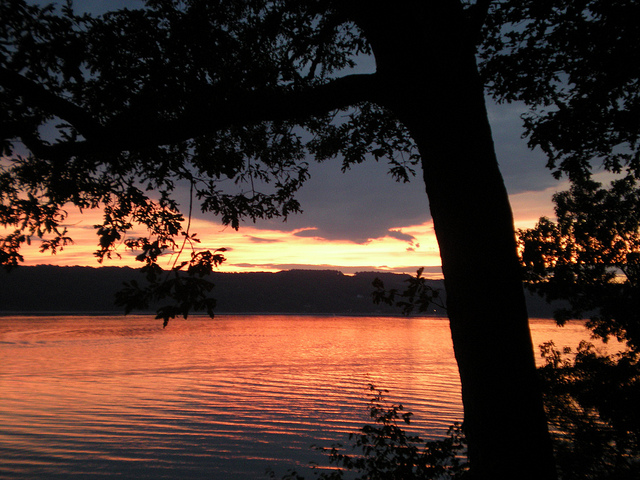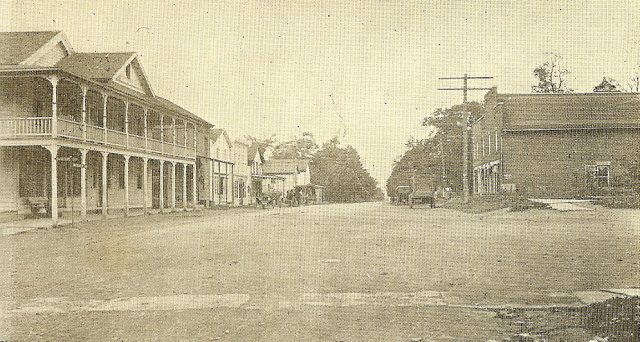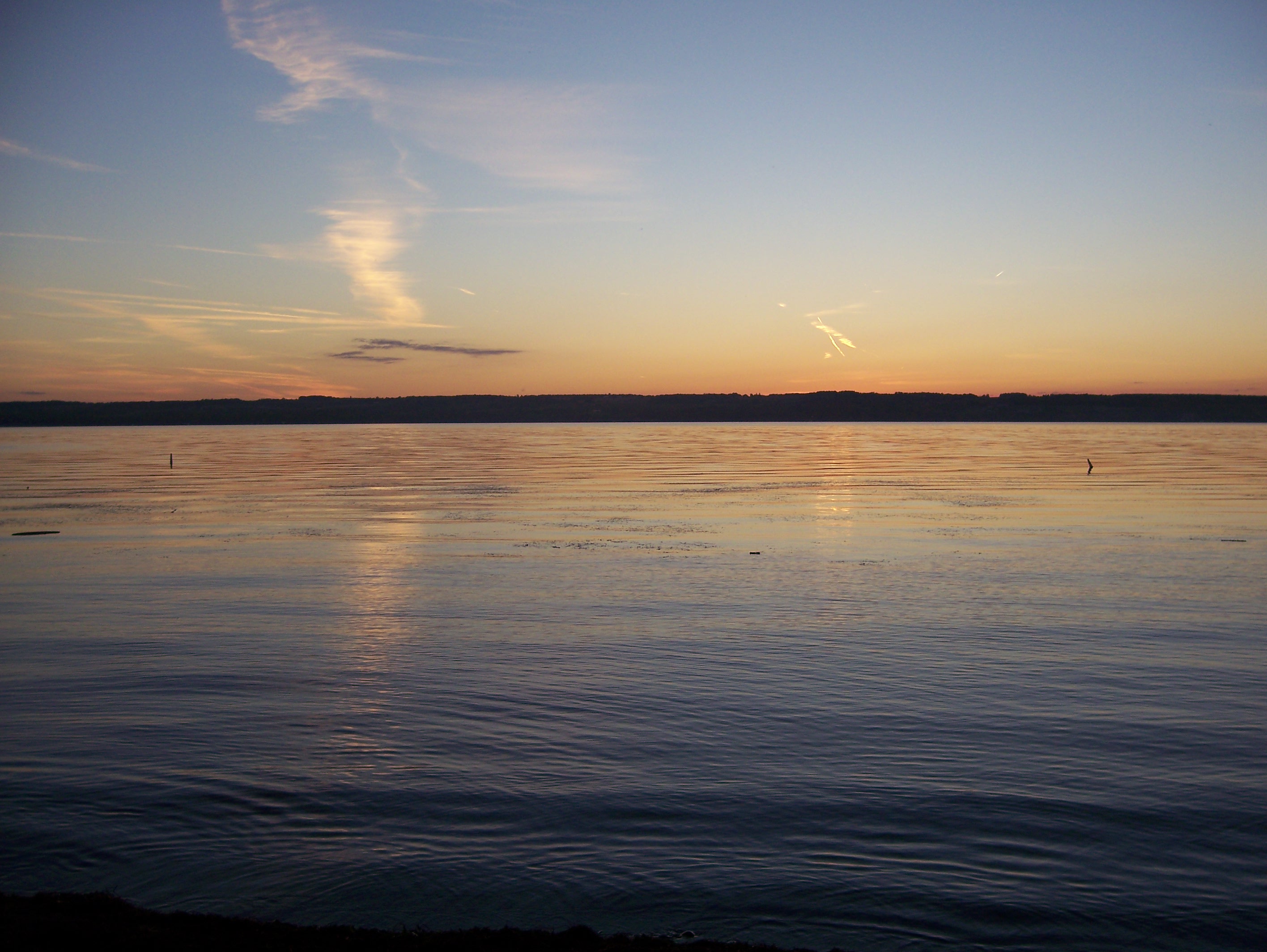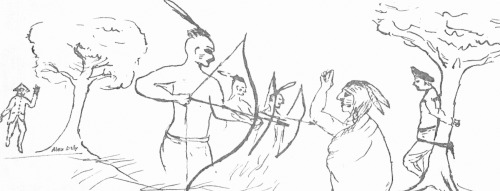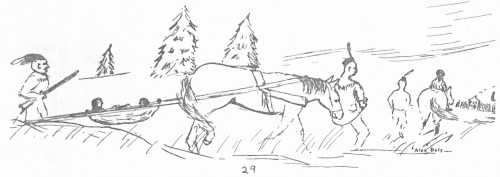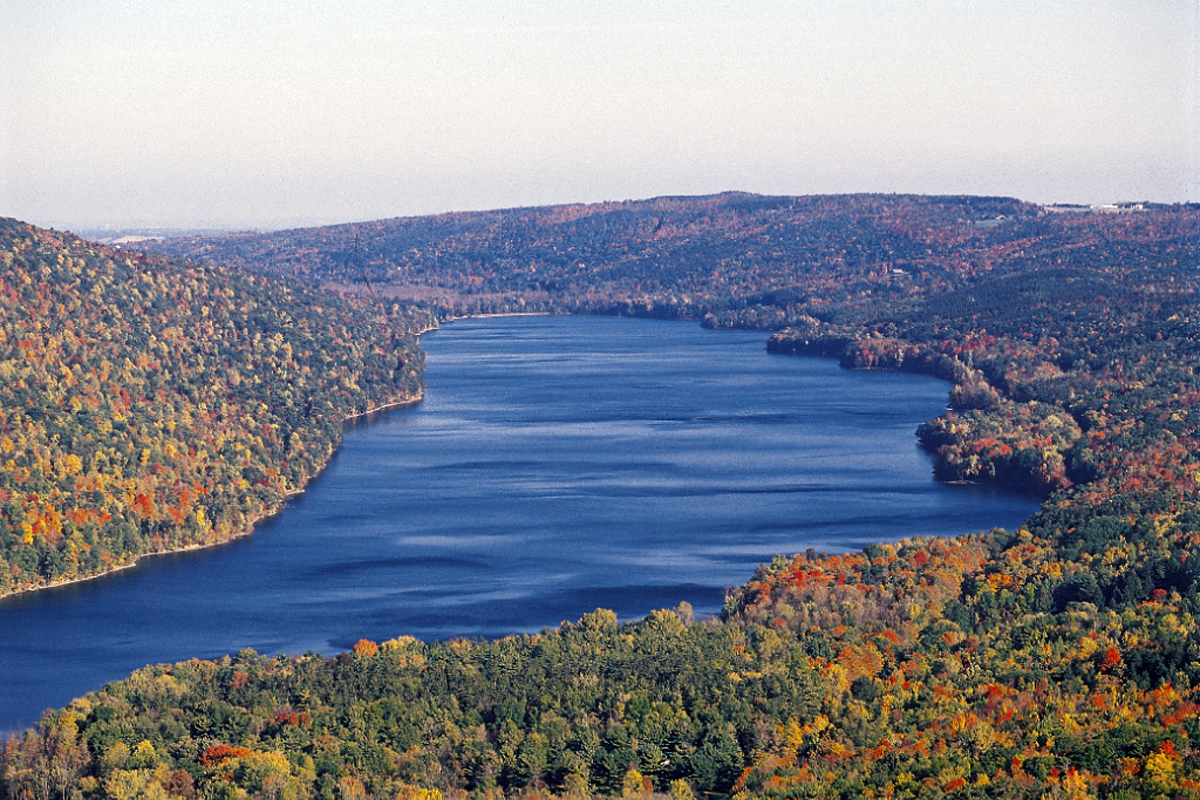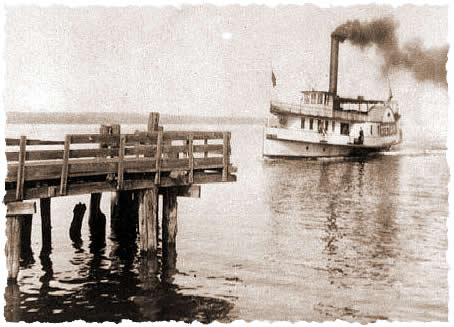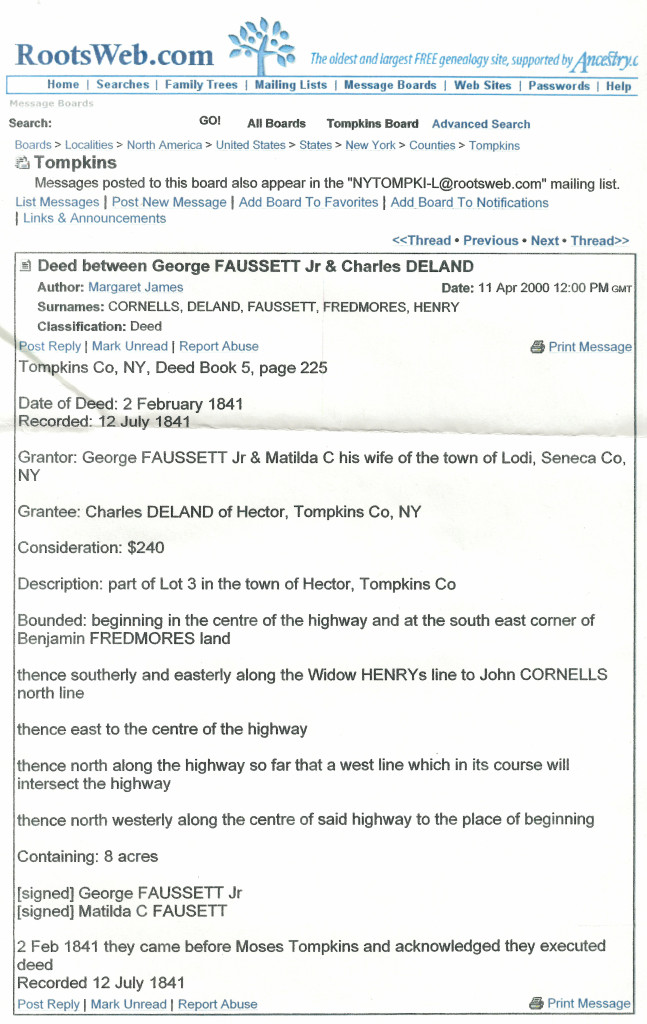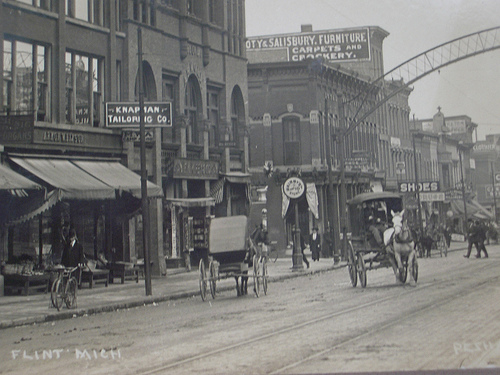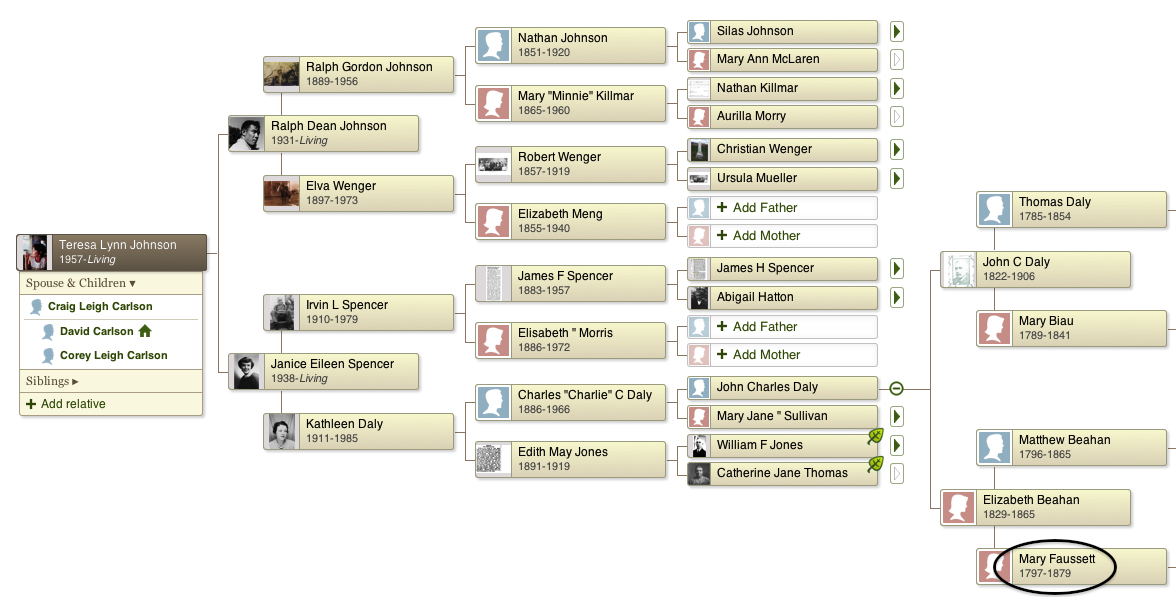Mary Faussett was born on September 3, 1797 in Faussett’s Point, Seneca, New York. She was the daughter of George Faucett (Faussett), the first settler of Caywood “Faussett’s” Point in Lodi, New York. Lodi is a gorgeous town located on Lake Seneca. It was the main village, with a nearby station on the railroad. Caywood Point (“Faussett’s Point”) is also on the same road.
Her father, George, was born in Kildare County, Ireland in 1760. He came to America in the 1780s and landed in Philadelphia. His services were sold for a term of three years to pay for his passage on the boat. He was the only one of a party of five who kept his agreement. He was placed with a Quaker family on a farm and was thankful the rest of his life for the knowledge of farming he gained there.
Later the returning soldiers of General Sullivan’s army gave glowing accounts of the beauty and richness of the country between Cayuga and Seneca Lakes in western New York state. Hundreds of young men from Pennsylvania and New England started out to take land there. Faussett was among them. He and a companion came to the south end of Seneca Lake and the companion took land on the west side of the lake. Faussett put his possessions in a bark canoe and paddled along the east shore. By gestures he made the Native Americans understand he wanted good land. They led him to a place where there was a spring and there he chose his land. On the way they roused a large bear and the Indians warned Faussett to keep clear of it, but he chased it and shot and killed it. This made a lasting impression on the Indians.
He called his land “Faussett’s Point.” He founded a claim upon the place by right of ‘tomahawk improvements’–these consisted of building a pole cabin thatched with bark, the deadening of timber in the vicinity, and the clearing of a small patch of ground. Legally these acts had no force, but among pioneers they gave a patent to the claim which a purchaser was bound to respect both on account of local agreement and the good will of the occupant.
The next year, he built a log house on the site. After getting his future home started, he went back to Philadelphia in search of a wife. The foster mother of the girl he chose tried to discourage him, saying she would not make a good wife for him. He persisted, and he and Mary “Polly” Morrison were married in early 1790. When spring came, they made the long trip to the new home by horseback. Historian Lloyd Koke writes: “With what feelings did that wife survey the scanty provision for her shelter, what a depression of feeling to look around upon a solitude however beautiful, what wonder if the lip trembled and tears fell as the endeared remembrance came of friends and kindred far removed, and perhaps forever! Custom ameliorates condition, and each year saw their circumstances improve. Frugality and labor brought a competence, and with the lapse of time came heavier crops, enlarged fields, and extended ownership.”
Polly proved to be a lovely pioneer wife. Together they managed to acquire sixteen hundred acres of land, free of debt, in a short time. Faussett had to take his grain to Elmira, or Newtown as it was then called, to be ground. It was a four day trip by horseback. At night he would sleep on the ground between two fires, kindled to keep wild animals away. Their howling was less disturbing than the thought of his young wife at home alone.
Stories are still told of his adventures and bravery. Once when he and Polly were caught in a storm on the lake, the boat capsized and he clung to the boat and held Polly up for six hours till they drifted to shore. Another time the Indians were about to put a man to death in the woods near Faussett’s home. They thought the man had killed an Indian. A neighbor ran and called Faussett, who got there just as they were ready to shoot the man with bows and arrows. Faussett broke through the circle and shouted “He is my friend,” and convinced them that the man was innocent and they let him go free.
In the War of 1812, near Buffalo, the outposts were so near that the Americans on one side and the British and Indians on the other could hear each other talk. An American soldier shouted “Jimmy Faussett,” and soon an Indian came with a white flag and asked if George Faussett’s Jimmy was there. He greeted Jimmy affectionately. That tribe of Indians, who were from Lake Seneca, refused to fight against the Americans any longer, and from then on kept Jimmy’s regiment supplied with venison while they were in that vicinity.
Their oldest child, Fanny, was the first white child born in this district between the lakes. When she was a year old they took her with them back to Sherman Valley to show her to Polly’s people. Three years later Polly took Fanny and James and went back again. The Indians were friendly and they relayed her from group to group with great care. This may have been the trip she took to Northumberland to have the children baptized.
Three more children were born to Polly and George: Florence, Polly (Mary), and George. Mary was born on the family homestead in the fall of 1797. Some years later Thomas and Matthew Beahan from Kildare County (Ireland) were traveling in New York state and came to see the beautiful Finger Lake country. They visited the Faussett home and both fell in love with daughters of the family. On September 2, 1819 Thomas Beahan married Florence Faussett, and Matthew Beahan married Polly in a double wedding. Each daughter was given a piece of land for a home. The home of Thomas and Florence is still in the possession of descendants. Matthew and Polly moved to Michigan after their family was grown up. The father of Thomas and Matthew was evidently well-to-do, as he made two trips from Ireland to visit his sons.
George Faussett was a leader and an example for the community. In 1818 he contributed six hundred dollars toward the erection of the Hector Church. He belonged to the Dutch Reformed Church. He made large contributions to both churches.
He was married twice. Some time after Polly’s death, a friend and neighbor who was dying asked George to look after his wife and family. He married the widow. There were no children from this marriage.
Another neighbor died in poverty, and his land fell into the possession of George Faussett, who made the widow and her son each a gift of one hundred acres of land.
He sent back to Ireland for his brother James and paid his expenses to come ot America. James settled near Bath, New York about 25 miles southwest of Hector.
When over eighty years of age, George met with an accident which left him slightly crippled. His mind became somewhat clouded after that, and he became homesick for Ireland. He used to sit and gaze out over the lake for hours.
The old Fausset home is now owned by the Boy Scouts of America and is called Camp Seneca.
Mary and Matthew Beahan had ten children: Mary (1820-1908), Harry (1822-1841), Thomas (1824-1834), Fannie (1826-1850), Elizabeth (1829-1865), George (1831-1865), Florence (1834-1865), Areulia (1836-1864), Charles (1839-1912), and Caroline (1842-1849).
Matthew and Mary moved the family to Flint, Genessee, Michigan at some point. Mary died in Flint on January 24, 1879. Her father’s land was passed on to her brother James and eventually sold to the Trust for Public Land by its owner in 1996. Today Faussett’s Point is property of the US Forest Service.
